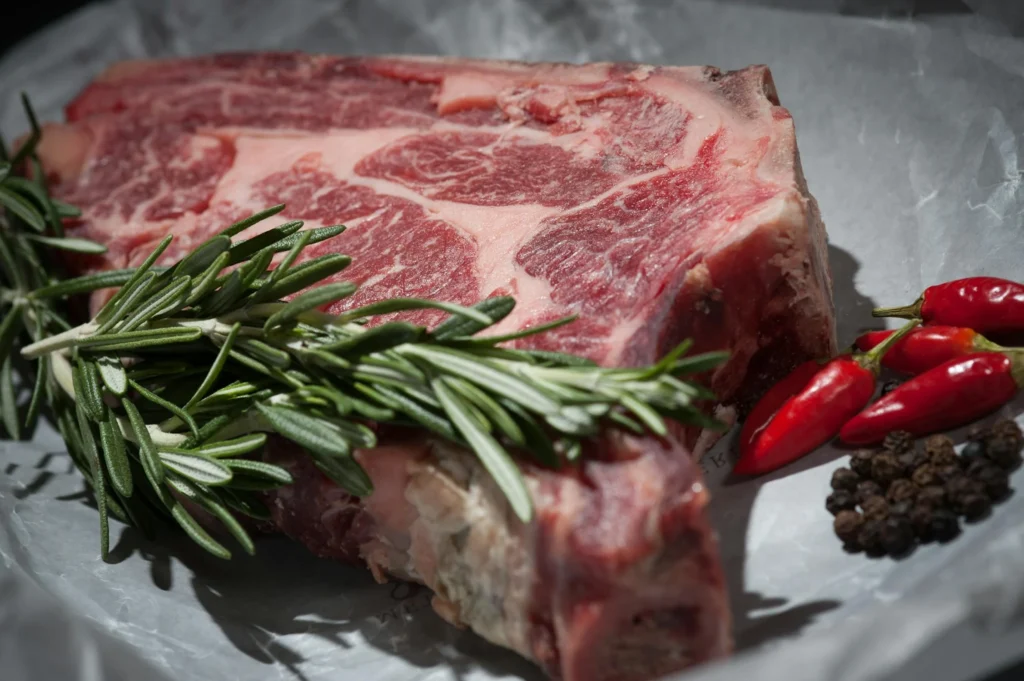Proper preparation of meat starts long before cooking. Unfortunately, many people rush the thawing process, often using methods that can compromise food safety. Here’s a look at the most common mistakes in thawing meat and how to avoid them to ensure your meals are safe and delicious.
1. Thawing Meat in the Microwave
Using the microwave for thawing seems convenient, but it can lead to uneven heating. Some parts of the meat may become warm enough to encourage bacterial growth while others remain frozen. This uneven temperature distribution increases the risk of foodborne illnesses.
Better Alternatives:
- Thaw meat in the refrigerator overnight.
- Use cold running water for quicker, safer thawing.
2. Poor Storage Practices
Improper storage of meat in the freezer can affect both its safety and flavor. For instance, storing meat in unsealed packaging allows air to seep in, causing freezer burn and increasing the likelihood of bacterial contamination.
Storage Tips:
- Use airtight containers or zip-lock freezer bags.
- Label and date your packages to track freshness.
3. Using Hot Water
Thawing meat in hot water might seem like a time-saver, but it’s dangerous. Hot water can quickly raise the meat’s temperature into the “danger zone” (5–60°C or 40–140°F), where bacteria can multiply rapidly.
What to Do Instead:
- Opt for cold water thawing: Submerge the meat in cold water and change the water every 30 minutes.
4. Thawing at Room Temperature
Leaving meat to thaw on the countertop is a high-risk practice. The outer layers of the meat thaw and warm up while the inner layers remain frozen, creating ideal conditions for bacteria to grow.
Safe Alternative:
- Always thaw meat in the refrigerator or under cold running water.
5. Thawing in the Oven
Attempting to thaw meat in the oven results in uneven defrosting. The outer layers may start to cook while the inside remains frozen. This not only affects texture but also poses safety risks.
Best Practice:
- Stick to refrigerator or cold-water methods for thawing.
6. Refreezing Thawed Meat
Refreezing meat after it has been thawed compromises its quality and safety. Each freeze-thaw cycle reduces moisture, resulting in dry, tasteless meat and a higher risk of bacterial contamination.
Solution:
- Only thaw what you plan to cook. If you must refreeze, ensure the meat was thawed in the refrigerator and hasn’t been sitting out.
7. Washing Meat
Washing meat may seem like a good hygiene practice, but it can actually spread bacteria to your sink, countertops, and other surfaces. Meat does not require washing, as any bacteria present will be destroyed during cooking.
Focus on Safe Handling:
- Handle meat carefully and clean all surfaces with hot, soapy water after contact.
8. Poor Hygiene and Preparation Habits
Handling meat carelessly increases the chances of cross-contamination. Failing to clean utensils, surfaces, and hands can lead to the spread of harmful bacteria like salmonella and E. coli.
Hygiene Tips:
- Wash your hands thoroughly before and after handling meat.
- Sanitize countertops, cutting boards, and utensils after use.
- Use separate boards for raw meat and other foods.
Safe Thawing Recommendations
- Refrigerator Thawing:
- Place meat in a container to catch drips.
- Thaw overnight; this method is slow but safest.
- Cold Water Thawing:
- Submerge meat in a leak-proof bag under cold running water.
- Change the water every 30 minutes.
- Cook Without Thawing:
- For smaller cuts, you can cook meat directly from frozen. Just increase cooking time by about 50%.
- Plan Ahead:
- Avoid last-minute thawing by planning meals and defrosting meat in advance.
Key Takeaways
Avoiding these common mistakes ensures your meat is safe to consume and retains its best qualities. Proper thawing is not just about convenience; it’s a critical step in preventing foodborne illnesses and enjoying flavorful, healthy meals.

